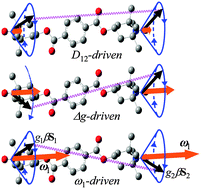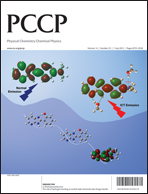Weakly exchange-coupled biradicals have attracted much attention in terms of their DNP application in NMR spectroscopy for biological systems or the use of synthetic electron-spin qubits. Pulse-ESR based electron spin nutation (ESN) spectroscopy applied to biradicals is generally treated as transition moment spectroscopy from the theoretical side, illustrating that it is a powerful and facile tool to determine relatively short distances between weakly exchange-coupled electron spins. The nutation frequency as a function of the microwave irradiation strength ω1 (angular frequency) for any cases of weakly exchange-coupled systems can be classified into three categories; D12 (spin dipolar interaction)-driven, Δg-driven and ω1-driven nutation behaviour with the increasing strength of ω1. For hetero-spin biradicals, Δg effects can be a dominating characteristic in the biradical nutation spectroscopy. Two-dimensional pulse-based electron spin nutation (2D-ESN) spectroscopy operating at the X-band can afford to determine small values of D12 in weakly exchange-coupled biradicals in rigid glasses. The analytical expressions derived here for ω1-dependent nutation frequencies are based on only four electronic spin states relevant to the biradicals, while real biradical systems often have sizable hyperfine interactions. Thus, we have evaluated nuclear hyperfine effects on the nutation frequencies to check the validity of the present theoretical treatment. The experimental spin dipolar coupling of a typical TEMPO-based biradical 1, (2,2,6,6-tetra[(2H3)methyl]-[3,3-2H2,4-2H1,5,5-2H2]piperidin-N-oxyl-4-yl)(2,2,6,6-tetra[(2H3)methyl]-[3,3-2H2,4-2H1,5,5-2H2,15N]piperidin-15N-oxyl-4-yl) terephthalate in a toluene glass, with a distance of 1.69 nm between the two spin sites is D12 = −32 MHz (the effect of the exchange coupling J12 is vanishing due to the homo-spin sites of 1, i.e. Δg = 0), while 0 < |J12| ≦ 1.0 MHz as determined by simulating the random-orientation CW ESR spectra of 1. In addition, we have carried out Q-band pulsed ELDOR (ELectron–electron DOuble Resonance) experiments to confirm whether the obtained values for D12 and J12 are accurate. The distance is in a fuzzy region for the distance-measurements capability of the conventional, powerful ELDOR spectroscopy. The strong and weak points of the ESN spectroscopy with a single microwave frequency applicable to weakly exchange-coupled multi-electron systems are discussed in comparison with conventional ELDOR spectroscopy. The theoretical spin dipolar tensor and exchange interaction of the TEMPO biradical, as obtained by sophisticated quantum chemical calculations, agree with the experimental ones.


 Please wait while we load your content...
Please wait while we load your content...